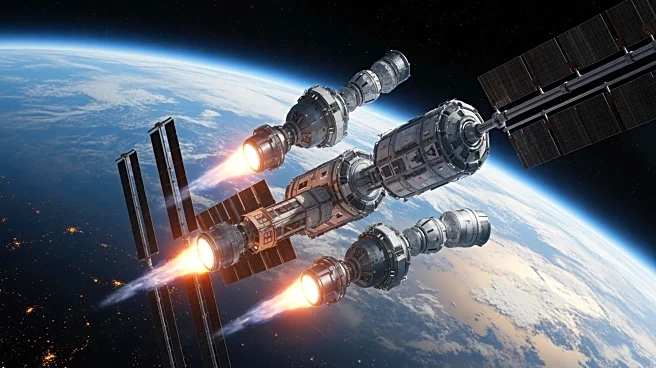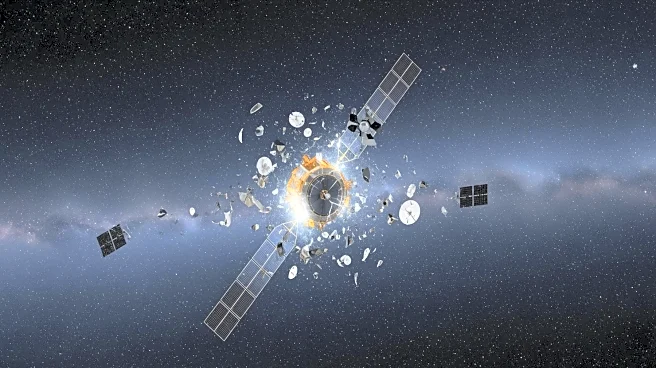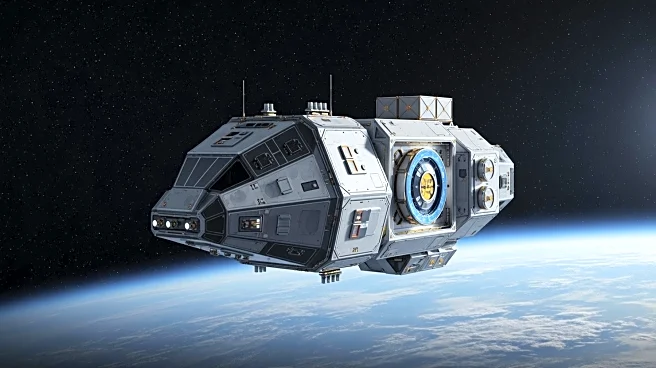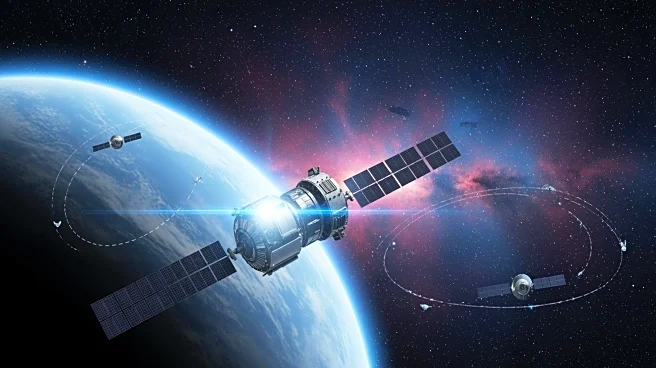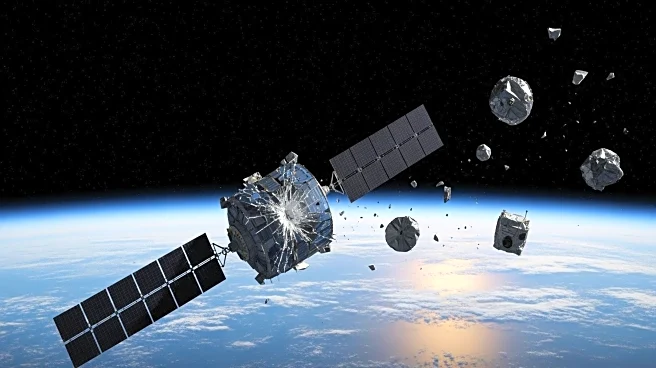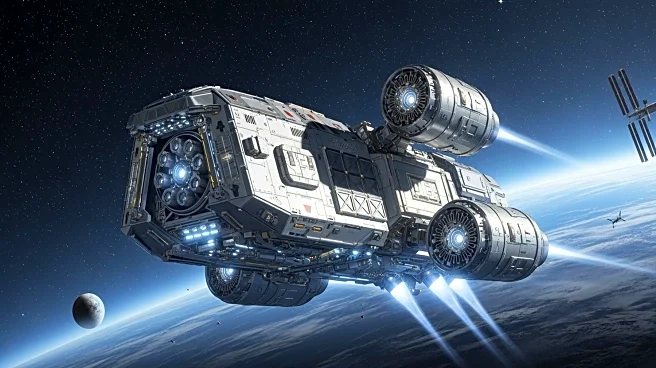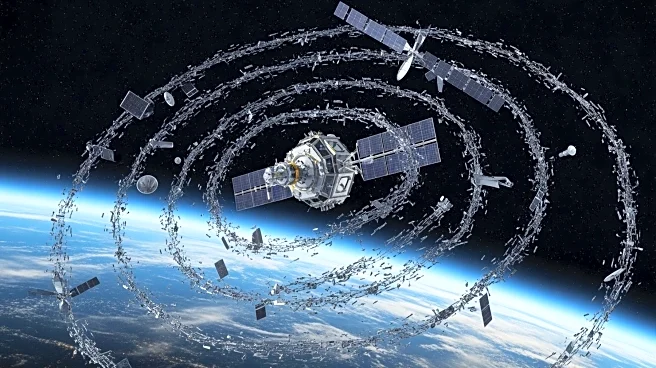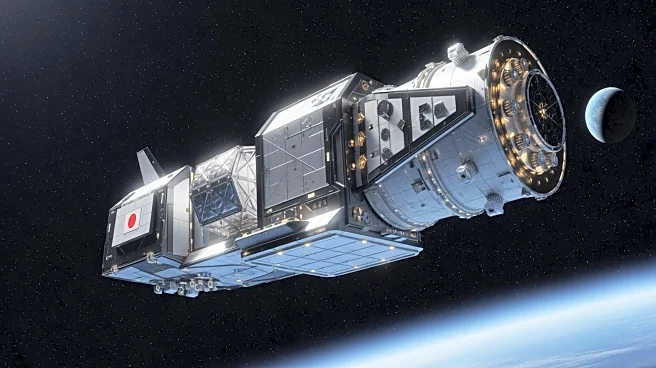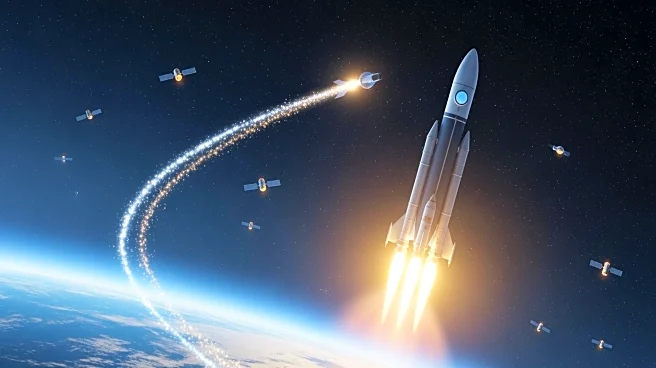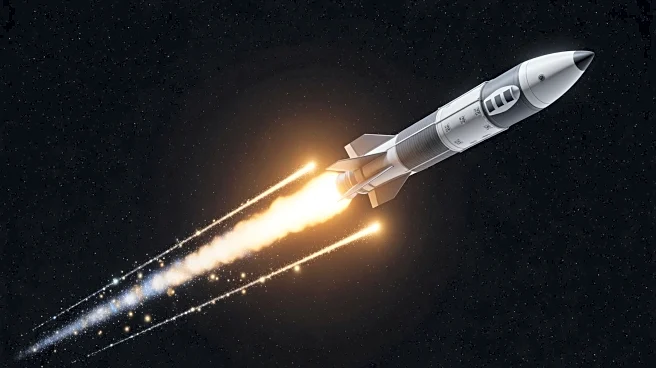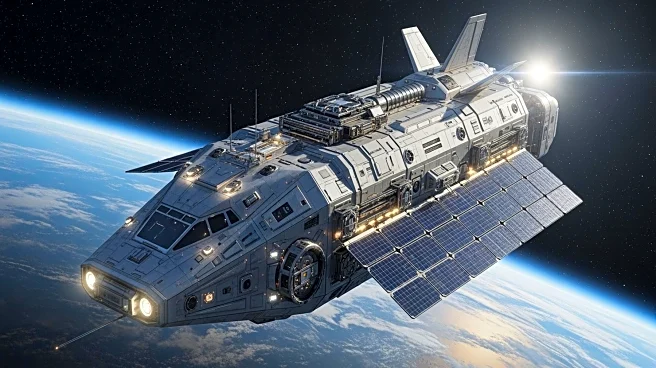What's Happening?
NASA has outlined a comprehensive plan to safely deorbit the International Space Station (ISS) around 2030. The ISS, a symbol of international scientific collaboration since its first module was launched
in 1998, will be guided back into Earth's atmosphere in a controlled manner to avoid the risk of debris impacting populated areas. The process involves gradually lowering the ISS's orbit through natural atmospheric drag, with engineers performing reboosts and orbital adjustments to maintain stability. Once the final crew has returned to Earth, a specially designed spacecraft, the U.S. Deorbit Vehicle (USDV), developed by SpaceX under NASA's direction, will guide the ISS towards Point Nemo in the South Pacific Ocean, known as the 'spacecraft cemetery.' This controlled descent will ensure that most of the ISS burns up upon reentry, with any remaining fragments falling harmlessly into the ocean.
Why It's Important?
The deorbiting of the ISS is significant as it represents the end of an era for one of humanity's most ambitious scientific endeavors. The ISS has been a permanent home in space and a laboratory for groundbreaking research in various fields, including medicine, physics, and climate science. The controlled deorbit plan is crucial to prevent potential hazards associated with an uncontrolled reentry, which could pose risks to populated areas due to the station's massive size and weight. This operation will require meticulous coordination among international partners, including NASA, Roscosmos, the European Space Agency, the Japan Aerospace Exploration Agency, and the Canadian Space Agency, highlighting the continued importance of international cooperation in space exploration.
What's Next?
As the ISS approaches the end of its mission life, NASA and its international partners will continue to monitor and adjust its orbit to ensure a safe and controlled descent. The development and testing of the U.S. Deorbit Vehicle will be a critical component of this process. The decommissioning of the ISS will also prompt discussions on the future of international space collaboration and the potential for new space stations or other projects to continue the legacy of the ISS in advancing scientific research and exploration.
Beyond the Headlines
The deorbiting of the ISS raises questions about the future of human presence in space and the role of international partnerships in space exploration. As the ISS has been a platform for scientific research and technological advancements, its decommissioning may lead to shifts in how space agencies and private companies collaborate on future projects. Additionally, the operation underscores the importance of responsible space management and the need to address space debris, which is becoming an increasingly pressing issue as more satellites and spacecraft are launched.
